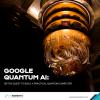
Breaking News
 BREAKING: Secret Study Conducted By Henry Ford Health Conclusively Proves...
BREAKING: Secret Study Conducted By Henry Ford Health Conclusively Proves...
Discovering Gems of Understanding
 Trump's Corporate Favor Factory
Trump's Corporate Favor Factory
 Google Quantum Supremacy And Artificial Intelligence
Google Quantum Supremacy And Artificial Intelligence
Top Tech News
 Graphene Dream Becomes a Reality as Miracle Material Enters Production for Better Chips, Batteries
Graphene Dream Becomes a Reality as Miracle Material Enters Production for Better Chips, Batteries
 Virtual Fencing May Allow Thousands More Cattle to Be Ranched on Land Rather Than in Barns
Virtual Fencing May Allow Thousands More Cattle to Be Ranched on Land Rather Than in Barns
 Prominent Personalities Sign Letter Seeking Ban On 'Development Of Superintelligence'
Prominent Personalities Sign Letter Seeking Ban On 'Development Of Superintelligence'
 Why 'Mirror Life' Is Causing Some Genetic Scientists To Freak Out
Why 'Mirror Life' Is Causing Some Genetic Scientists To Freak Out
 Retina e-paper promises screens 'visually indistinguishable from reality'
Retina e-paper promises screens 'visually indistinguishable from reality'
 Scientists baffled as interstellar visitor appears to reverse thrust before vanishing behind the sun
Scientists baffled as interstellar visitor appears to reverse thrust before vanishing behind the sun
 Future of Satellite of Direct to Cellphone
Future of Satellite of Direct to Cellphone
 Amazon goes nuclear with new modular reactor plant
Amazon goes nuclear with new modular reactor plant
 China Is Making 800-Mile EV Batteries. Here's Why America Can't Have Them
China Is Making 800-Mile EV Batteries. Here's Why America Can't Have Them
Racing to Exawatt Class Lasers and Beyond

Peak laser intensity demonstrations have occurred on specific Nd:glass-based lasers:
* the Vulcan PW in the UK at 1 × 10^21 W/cm2 (2004);
* the Ti:sapphirebased HERCULES laser at the University of Michigan, USA at 1 × 10^22 W/cm2 (2004)
* J-KAREN-P in Japan at 1 × 10^22 W/cm2 (2018)
* record intensity of 5.5 × 10^22 W/cm2 was demonstrated at the CoReLS laser (2019)
Even the highest-peak-power laser systems (10 PW and beyond) proposed or already in commissioning make no exception to this trend and largely predict intensities of only up to 10^23 W/cm2
(notably L4-ELI, EP-OPAL , SULF and SEL).
A fundamental physics or engineering limit is not clear; however, material challenges such as imperfect diffraction gratings, optics and gain materials reduce the overall laser focusability in time and space.
The steady ascent of Ti:sapphire, OPCPA and Nd:glass technologies upward in peak power has, with the construction of several ten to multi-tens of petawatt systems, nearly reached the ∼100 PW limit of metre-scale gold diffraction gratings.

 China Innovates: Transforming Sand into Paper
China Innovates: Transforming Sand into Paper

